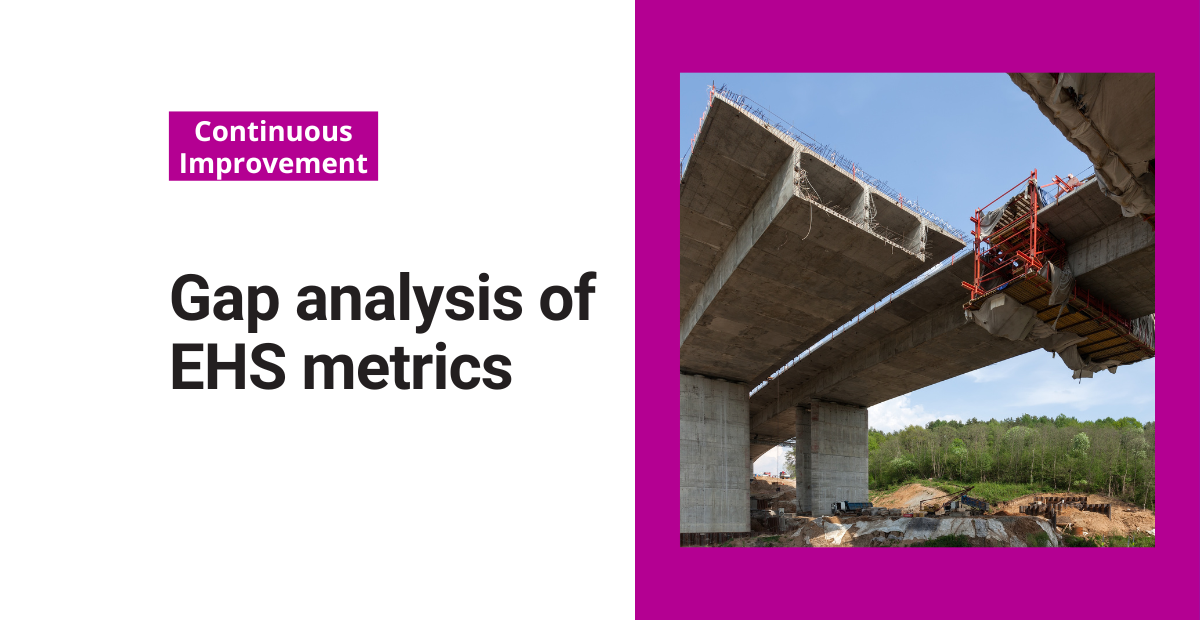In high-risk industries, the cost of a safety incident can be disastrous for the financial health of a company. And so, the importance of setting safety-related goals has multiple indications for long-term success.
You may have considered performing a gap analysis of financial goals, but the principles underlying this technique can be used to assess other areas of performance as well. When it comes to incident prevention, a gap analysis of EHS metrics can have a positive impact on the success of your efforts.
Basics of completing a gap analysis
Business leaders often use the term “gap” to describe the metaphorical space between the current state of things and a desired goal. In other words, a gap is anything yet to do before you can reach your goals.
To better understand how to get from point A to point B, businesses perform a gap analysis of each goal. This involves a few key steps:
- Clearly define an objective you want to meet.
- Assess the current state of your progress towards that objective.
- Benchmark your current state against a desired outcome.
- Decide if there’s a gap between your current state and your established goal.
- Determine corrective actions to reach the goal at (or before) your deadline.
As with any type of goal setting, gap analyses are more effective when they’re measurable. But in the field of health and safety, it’s sometimes difficult to quantify goals.
The easiest approach is to use EHS metrics in step one of the gap analyses, defining your overall objective. Then, use a mixture of qualitative and quantitative goals in step three to direct your entire operation towards an EHS metric-driven outcome.
EHS gap analysis example
If you need help getting started, consider this example of how you can use gap analysis to improve your site’s EHS performance.
Here’s the scenario:
You work at a warehouse operation that manufactures consumer goods. You’ve recently noticed that foot injuries are by far the most common type of recordable injury across all departments. To reduce your site’s TRIR, you’ve decided to tackle the rate of foot injuries.
Given this scenario, let’s walk through each step of the gap analysis process.
Step 1: Define your objective.
Reduce foot-related safety incidents with a safety shoe voucher program, reducing the site’s TRIR to 3.0 by the end of the year.
Step 2: Assess the current state.
346 employees are enrolled in the program.
Step 3: State the desired outcome.
Get 500 employees to enroll in the program.
Step 4: Decide if a gap exists.
There is a gap—we need 154 more employees to enroll in the program.
Step 5: Determine corrective action to take.
Have all managers engage employees one on one regarding the shoe program.
If you want a simple way to document your gap analyses, use this free Excel template which includes the information from the above example:
Through this example, it’s easy to see how a gap analysis driven by EHS metrics can help you create a safer workplace.
But it’s also easy to see that this process alone won’t ensure you reach your goals. It’s simply a method to identify where you are, where you want to be, and how you can get there.
Other posts you might like…
No posts

